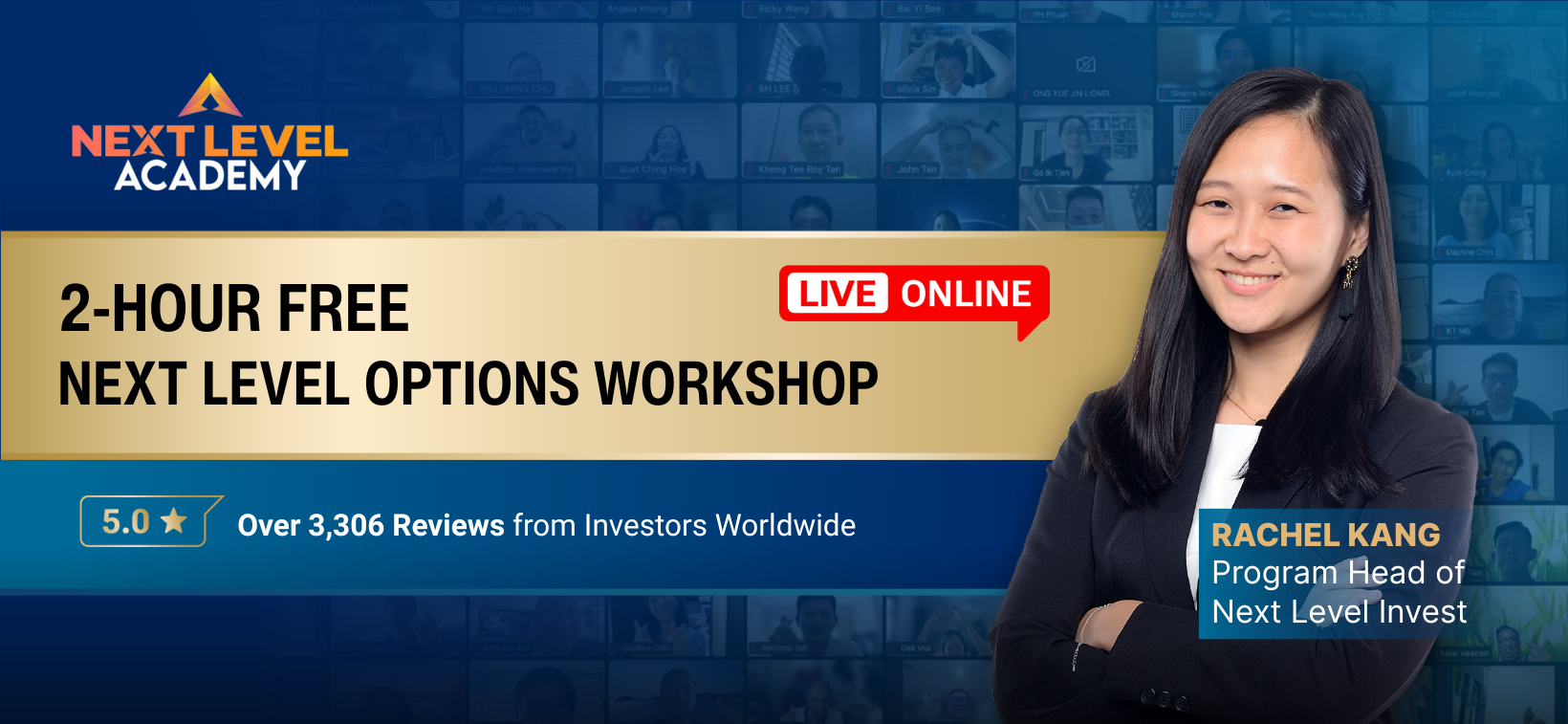- Live Life Grow Wealth
- Posts
- 🌍 Series 3 Day 4: Global Investing — Why You Shouldn’t Just Stick to One Country
🌍 Series 3 Day 4: Global Investing — Why You Shouldn’t Just Stick to One Country

Today’s Headline
🌍 Series 3: Building a Strong Investment Portfolio
Day 4: Global Investing — Why You Shouldn’t Just Stick to One Country
When I first started investing, I only bought local stocks. It felt safer because I understood the brands, I saw their products every day, and I thought, “Why look elsewhere when my own market has so many options?” But as I learned more, I realized I was missing out on one of the biggest opportunities in investing — the rest of the world.
The truth is, no single country has a monopoly on growth. Every part of the world has different strengths, industries, and economic cycles. By investing globally, you open yourself to new opportunities, reduce your risks, and tap into the world’s most innovative and fast-growing companies.
In today’s connected world, your portfolio shouldn’t stop at your country’s border. Let’s explore why.
“This Tool Quietly Helped Creators 10x Their Revenue — Without More Work”
The 7- & 8-Figure Seller’s Secret to Holiday Growth
The holiday rush is almost here. Are you ready to make this your best Q4 yet?
Top sellers already have their playbook. Lucky for you, we created one for you.
Inside our free guide, 7- & 8-Figure Seller’s Q4 + Holiday Playbook, you’ll find critical insights and actionable strategies designed to help Amazon brands and agencies win the busiest season of the year.
Here’s what you’ll come away with:
Which promotions actually move the needle (and when to run them)
Inventory + pricing strategies that protect profits during peak events
Advanced ad tactics across Sponsored Products, Brands, Display, and DSP
Off-Amazon traffic strategies to boost sales and rankings
Pre-, during-, and post-event checklists for smarter execution
Q4 and the holiday shopping season are right around the corner. Don’t miss your chance to get ahead.
🌍 Why Staying Local Can Limit Your Potential
Many investors make the mistake of “home bias.” It means they invest mostly in companies from their own country because it feels familiar and comfortable. I get it — it’s easier to trust what you know. But here’s the problem: your home country only represents a small piece of the global economy.
For example, imagine if you only invest in Singaporean companies. The Singapore market is well-run, but it’s small compared to giants like the U.S., China, or Europe. That means you’re missing out on:
Global tech companies like Apple, Microsoft, or NVIDIA.
Fast-growing Asian firms from China, India, or South Korea.
Stable European businesses in luxury goods, energy, or healthcare.
In short, sticking to one country limits your opportunities — both for growth and protection.
💡 Global Investing Spreads Your Risk
Here’s something I learned the hard way: every country has its ups and downs.
One year, your local economy might boom — the next, it could slow down. But another part of the world might be thriving at the same time. Global investing helps balance this out.
Think of it like this:
When the U.S. market faces inflation, Asian markets might still grow.
When Europe struggles with energy costs, the U.S. dollar might strengthen.
When China’s economy cools, India might be heating up.
By owning investments from different regions, you reduce your risk of being affected by one country’s problems. It’s the same idea as diversification — but on a global scale.
📈 Different Regions, Different Strengths
Each region of the world has its own “special powers” when it comes to investing. Here’s a simple breakdown:
United States: Home to world leaders in technology, innovation, and finance. Think of big names like Apple, Amazon, and Google. The U.S. is known for consistent long-term growth and strong corporate governance.
Europe: Offers stability and solid dividend-paying companies. You’ll find leaders in luxury goods (like LVMH), pharmaceuticals (like Roche), and renewable energy.
Asia: A growth engine of the world. China, India, and Southeast Asia are full of fast-growing companies in manufacturing, technology, and digital services.
Emerging Markets: These are developing countries with huge potential. While riskier, they often grow faster than developed economies. Think Brazil, Indonesia, or Vietnam.
By mixing investments across these regions, you capture the best of each world — innovation, stability, and growth.
🧭 The Currency Factor
One often-overlooked part of global investing is currency movement.
When you invest overseas, you’re also exposed to foreign currencies. That can sound scary, but it’s actually another layer of diversification.
For example:
If the Singapore dollar weakens while the U.S. dollar strengthens, your U.S. investments may increase in value when converted back.
On the other hand, if your local currency gets stronger, your foreign holdings might dip temporarily — but that’s part of the natural balance of global investing.
Over time, currency shifts even out, but they can sometimes work in your favor. The key is to stay invested long enough to benefit from the global mix.
🏦 How to Start Investing Globally
You might be thinking, “I don’t have time to study every country’s economy!” Don’t worry — global investing doesn’t have to be complicated.
Here are a few simple ways to get started:
Global ETFs (Exchange-Traded Funds)
These funds automatically invest in hundreds of companies from different countries. One global ETF gives you exposure to the world without having to pick individual stocks.Regional ETFs or Funds
If you want to focus on a specific region (like Asia or Europe), you can buy ETFs that track those markets.International Companies Listed Locally
Many global giants are listed on your local exchange through depository receipts or funds, allowing you to buy them easily.Robo-Advisors or Global Platforms
Today’s investing platforms make it easy to access global markets directly from your phone.
The goal isn’t to rush into all of them — it’s to slowly build exposure and understand how global investments fit into your strategy.
⚖️ Balancing Local and Global Investments
I’m not saying you should abandon your home market completely. Local stocks still matter — they’re often easier to understand and come with less currency risk.
But a healthy balance might look like this:
50% local investments
50% global investments
Or for more adventurous investors:
30% local
70% global
The right mix depends on your comfort level, risk tolerance, and access to global markets. What’s most important is that you’re not relying 100% on one economy.
📉 What Happens When You Don’t Diversify Globally
Let’s take a real example.
In the 1990s, Japan was one of the most powerful economies in the world. Its stock market was booming. But after its asset bubble burst, it took decades for the market to recover. Investors who only held Japanese stocks saw their portfolios shrink for years.
On the other hand, those who owned a mix of global assets — including U.S. or European stocks — were able to ride through the downturn more easily.
The lesson? Even strong countries can go through long periods of stagnation. Having a global mix protects you from being stuck in one slow-moving market.
“Want passive income that doesn’t depend on timing the market? Click here to see how Stocks & Income delivers dividend & income ideas straight to your inbox.”
Financial News Keeps You Poor. Here's Why.
The scandalous truth: Most market news is designed to inform you about what already happened, not help you profit from what's coming next.
When CNBC reports "Stock XYZ surges 287%"—you missed it.
What you actually need:
Tomorrow's IPO calendar (not yesterday's launches)
Crowdfunding deals opening this week (not closed rounds)
What real traders are positioning for (not TV talking heads)
Economic data that moves markets (before it's released)
The financial media industrial complex profits from keeping you one step behind.
Stocks & Income flips this backwards. We focus entirely on forward-looking intel that helps you get positioned before the crowd, not informed after the move.
Stop chasing trades that happened already.
Start prepping for the next one.
Stocks & Income is for informational purposes only and is not intended to be used as investment advice. Do your own research.
🔮 The World Is Always Changing
Global investing is also about catching new opportunities.
For example:
The U.S. led the world in technology in the 2000s.
China became the world’s manufacturing powerhouse in the 2010s.
India and Southeast Asia are now rising fast in digital innovation and consumption.
Each decade brings new leaders, and global investing ensures you’re always part of the world’s growth story — not just your local one.
💬 The Emotional Benefit
Global investing also gives you a calmer mindset.
When your entire portfolio depends on one market, every local headline — an election, policy change, or economic slowdown — can make you panic. But when your money is spread around the world, you’re less shaken by one country’s short-term issues.
It’s like having multiple sources of income instead of relying on one job. If one slows down, others keep things steady.
That peace of mind is priceless.
🌐 My Own Experience
When I first started expanding globally, I was nervous. I didn’t understand how foreign markets worked, and currency risks seemed confusing. But as I learned, I realized how powerful it was.
During times when Singapore’s market was quiet, my U.S. tech stocks carried my portfolio. When U.S. stocks slowed, my Asian investments grew. It felt like watching different engines power my financial train at different times.
It’s not about chasing the hottest market — it’s about having multiple engines pulling your portfolio forward.
🪙 Key Points to Remember
To make global investing simple, here’s what I always keep in mind:
Don’t be afraid to go beyond borders. Opportunities exist everywhere, not just at home.
Mix developed and emerging markets. Developed markets give stability; emerging markets give growth.
Be patient. Global investments may take time to shine, but they often outperform over the long term.
Think of it as insurance. If your local market slows, others can pick up the pace.
Rebalance yearly. Keep your local/global mix aligned with your goals.
Final Takeaways
The world is much bigger than your home country, and so are the opportunities. Global investing is not just about chasing higher returns — it’s about protecting yourself from risk, gaining access to innovation, and being part of worldwide growth.
No country stays on top forever. Economies rise, fall, and evolve. The investors who grow the most are those who think globally and act strategically.
📣 Call to Action
Take a look at your portfolio today.
Ask yourself:
Are most of my investments from one country?
If that country faces a downturn, how would my portfolio react?
Am I missing out on global growth stories happening elsewhere?
If your answers lean toward “yes,” it’s time to start thinking globally. Begin small — maybe one global ETF or a few international companies you believe in.
Remember, investing isn’t about being patriotic; it’s about being smart. The world is your playing field — and it’s time to start exploring it.
Let’s grow together — not just locally, but globally. 🌍
[Live Life Grow Wealth]
🎓 Free Masterclasses to Unlock Your Investment Potential
Take your money skills to the next level with expert-led workshops designed to help you grow smarter and faster.
Recommendations Section
|
|
|
|
DISCLAIMER
I make no representations, warranties, or guarantees, whether expressed or implied, that the content provided is accurate, complete, or up-to-date. Past performance is not indicative nor a guarantee of future returns.
I am an individual content creator and not regulated or licensed by the Monetary Authority of Singapore (MAS) as I do not provide investment services.
All forms of investments carry risks, including the risk of losing your entire invested amount. Such activities may not be suitable for everyone. You are strongly encouraged to seek advice from a professional financial advisor if you have any doubts or concerns.









